Rishabh Jain
Princeton365: A Diverse Dataset with Accurate Camera Pose
Jun 10, 2025Abstract:We introduce Princeton365, a large-scale diverse dataset of 365 videos with accurate camera pose. Our dataset bridges the gap between accuracy and data diversity in current SLAM benchmarks by introducing a novel ground truth collection framework that leverages calibration boards and a 360-camera. We collect indoor, outdoor, and object scanning videos with synchronized monocular and stereo RGB video outputs as well as IMU. We further propose a new scene scale-aware evaluation metric for SLAM based on the the optical flow induced by the camera pose estimation error. In contrast to the current metrics, our new metric allows for comparison between the performance of SLAM methods across scenes as opposed to existing metrics such as Average Trajectory Error (ATE), allowing researchers to analyze the failure modes of their methods. We also propose a challenging Novel View Synthesis benchmark that covers cases not covered by current NVS benchmarks, such as fully non-Lambertian scenes with 360-degree camera trajectories. Please visit https://princeton365.cs.princeton.edu for the dataset, code, videos, and submission.
EOPose : Exemplar-based object reposing using Generalized Pose Correspondences
May 06, 2025Abstract:Reposing objects in images has a myriad of applications, especially for e-commerce where several variants of product images need to be produced quickly. In this work, we leverage the recent advances in unsupervised keypoint correspondence detection between different object images of the same class to propose an end-to-end framework for generic object reposing. Our method, EOPose, takes a target pose-guidance image as input and uses its keypoint correspondence with the source object image to warp and re-render the latter into the target pose using a novel three-step approach. Unlike generative approaches, our method also preserves the fine-grained details of the object such as its exact colors, textures, and brand marks. We also prepare a new dataset of paired objects based on the Objaverse dataset to train and test our network. EOPose produces high-quality reposing output as evidenced by different image quality metrics (PSNR, SSIM and FID). Besides a description of the method and the dataset, the paper also includes detailed ablation and user studies to indicate the efficacy of the proposed method
Pushing the Performance Envelope of DNN-based Recommendation Systems Inference on GPUs
Oct 29, 2024Abstract:Personalized recommendation is a ubiquitous application on the internet, with many industries and hyperscalers extensively leveraging Deep Learning Recommendation Models (DLRMs) for their personalization needs (like ad serving or movie suggestions). With growing model and dataset sizes pushing computation and memory requirements, GPUs are being increasingly preferred for executing DLRM inference. However, serving newer DLRMs, while meeting acceptable latencies, continues to remain challenging, making traditional deployments increasingly more GPU-hungry, resulting in higher inference serving costs. In this paper, we show that the embedding stage continues to be the primary bottleneck in the GPU inference pipeline, leading up to a 3.2x embedding-only performance slowdown. To thoroughly grasp the problem, we conduct a detailed microarchitecture characterization and highlight the presence of low occupancy in the standard embedding kernels. By leveraging direct compiler optimizations, we achieve optimal occupancy, pushing the performance by up to 53%. Yet, long memory latency stalls continue to exist. To tackle this challenge, we propose specialized plug-and-play-based software prefetching and L2 pinning techniques, which help in hiding and decreasing the latencies. Further, we propose combining them, as they complement each other. Experimental evaluations using A100 GPUs with large models and datasets show that our proposed techniques improve performance by up to 103% for the embedding stage, and up to 77% for the overall DLRM inference pipeline.
A Perspective on Foundation Models for the Electric Power Grid
Jul 12, 2024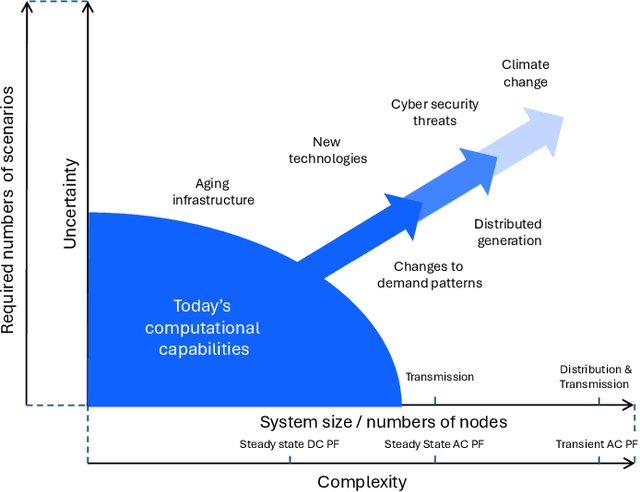
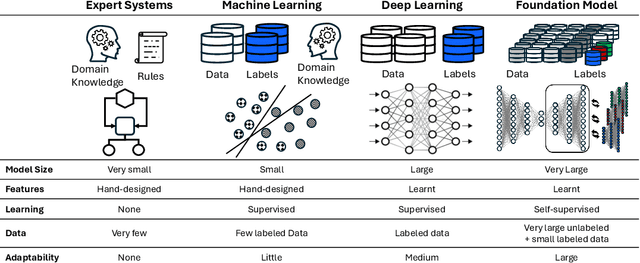
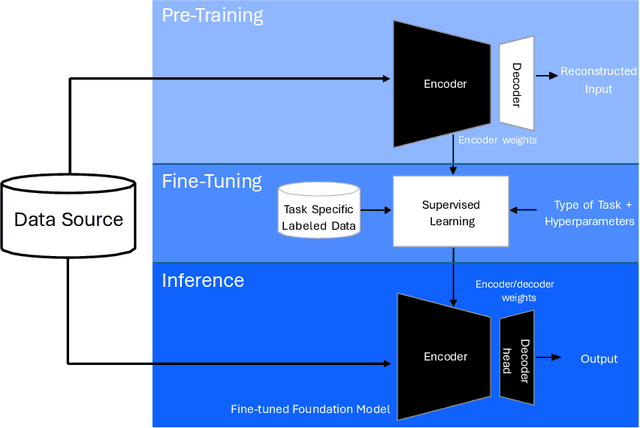

Abstract:Foundation models (FMs) currently dominate news headlines. They employ advanced deep learning architectures to extract structural information autonomously from vast datasets through self-supervision. The resulting rich representations of complex systems and dynamics can be applied to many downstream applications. Therefore, FMs can find uses in electric power grids, challenged by the energy transition and climate change. In this paper, we call for the development of, and state why we believe in, the potential of FMs for electric grids. We highlight their strengths and weaknesses amidst the challenges of a changing grid. We argue that an FM learning from diverse grid data and topologies could unlock transformative capabilities, pioneering a new approach in leveraging AI to redefine how we manage complexity and uncertainty in the electric grid. Finally, we discuss a power grid FM concept, namely GridFM, based on graph neural networks and show how different downstream tasks benefit.
Shotluck Holmes: A Family of Efficient Small-Scale Large Language Vision Models For Video Captioning and Summarization
May 31, 2024Abstract:Video is an increasingly prominent and information-dense medium, yet it poses substantial challenges for language models. A typical video consists of a sequence of shorter segments, or shots, that collectively form a coherent narrative. Each shot is analogous to a word in a sentence where multiple data streams of information (such as visual and auditory data) must be processed simultaneously. Comprehension of the entire video requires not only understanding the visual-audio information of each shot but also requires that the model links the ideas between each shot to generate a larger, all-encompassing story. Despite significant progress in the field, current works often overlook videos' more granular shot-by-shot semantic information. In this project, we propose a family of efficient large language vision models (LLVMs) to boost video summarization and captioning called Shotluck Holmes. By leveraging better pretraining and data collection strategies, we extend the abilities of existing small LLVMs from being able to understand a picture to being able to understand a sequence of frames. Specifically, we show that Shotluck Holmes achieves better performance than state-of-the-art results on the Shot2Story video captioning and summary task with significantly smaller and more computationally efficient models.
Data Center Audio/Video Intelligence on Device (DAVID) -- An Edge-AI Platform for Smart-Toys
Nov 18, 2023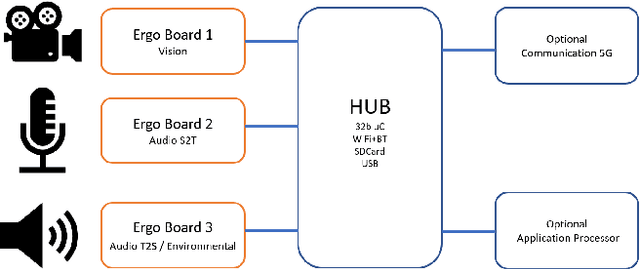
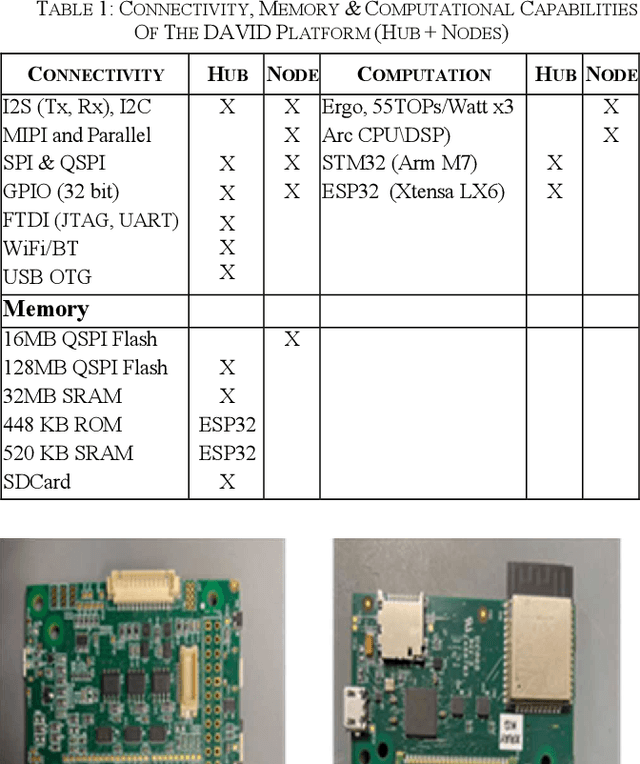
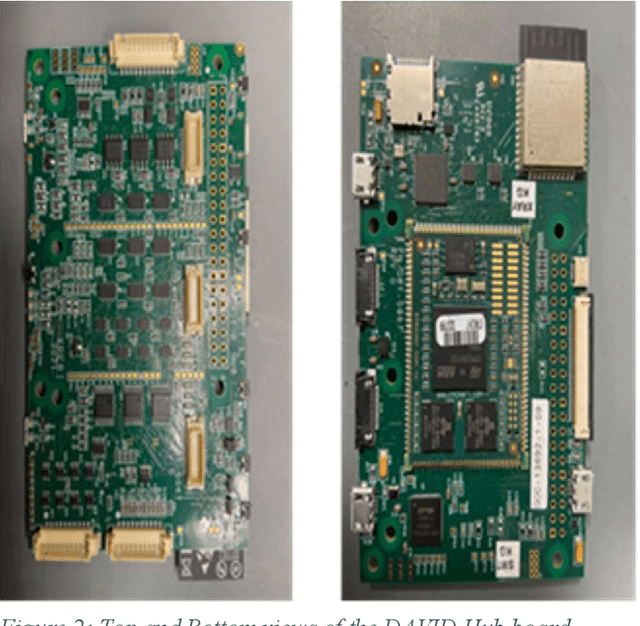
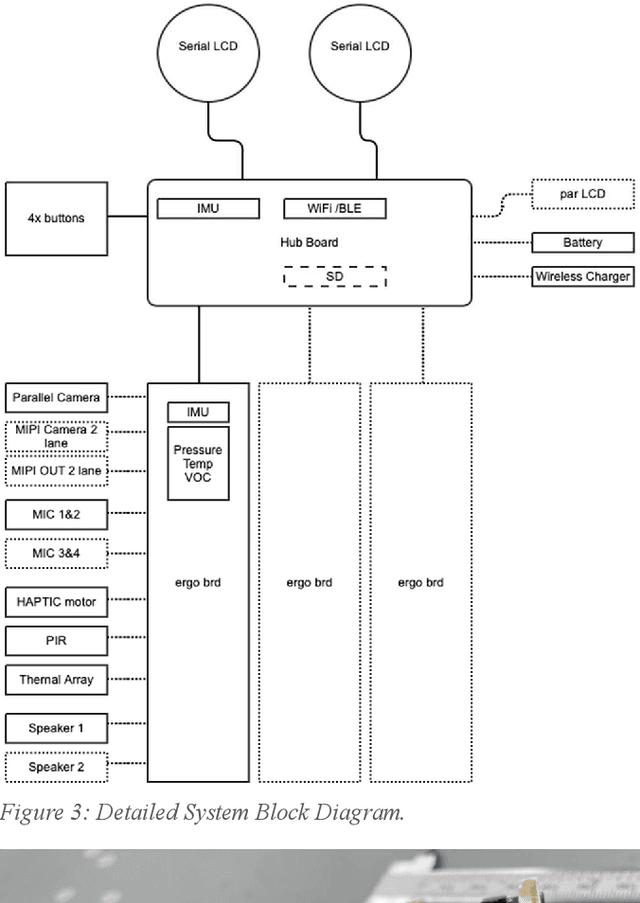
Abstract:An overview is given of the DAVID Smart-Toy platform, one of the first Edge AI platform designs to incorporate advanced low-power data processing by neural inference models co-located with the relevant image or audio sensors. There is also on-board capability for in-device text-to-speech generation. Two alternative embodiments are presented: a smart Teddy-bear, and a roving dog-like robot. The platform offers a speech-driven user interface and can observe and interpret user actions and facial expressions via its computer vision sensor node. A particular benefit of this design is that no personally identifiable information passes beyond the neural inference nodes thus providing inbuilt compliance with data protection regulations.
Synthetic Speaking Children -- Why We Need Them and How to Make Them
Nov 08, 2023Abstract:Contemporary Human Computer Interaction (HCI) research relies primarily on neural network models for machine vision and speech understanding of a system user. Such models require extensively annotated training datasets for optimal performance and when building interfaces for users from a vulnerable population such as young children, GDPR introduces significant complexities in data collection, management, and processing. Motivated by the training needs of an Edge AI smart toy platform this research explores the latest advances in generative neural technologies and provides a working proof of concept of a controllable data generation pipeline for speech driven facial training data at scale. In this context, we demonstrate how StyleGAN2 can be finetuned to create a gender balanced dataset of children's faces. This dataset includes a variety of controllable factors such as facial expressions, age variations, facial poses, and even speech-driven animations with realistic lip synchronization. By combining generative text to speech models for child voice synthesis and a 3D landmark based talking heads pipeline, we can generate highly realistic, entirely synthetic, talking child video clips. These video clips can provide valuable, and controllable, synthetic training data for neural network models, bridging the gap when real data is scarce or restricted due to privacy regulations.
Improved Child Text-to-Speech Synthesis through Fastpitch-based Transfer Learning
Nov 07, 2023



Abstract:Speech synthesis technology has witnessed significant advancements in recent years, enabling the creation of natural and expressive synthetic speech. One area of particular interest is the generation of synthetic child speech, which presents unique challenges due to children's distinct vocal characteristics and developmental stages. This paper presents a novel approach that leverages the Fastpitch text-to-speech (TTS) model for generating high-quality synthetic child speech. This study uses the transfer learning training pipeline. The approach involved finetuning a multi-speaker TTS model to work with child speech. We use the cleaned version of the publicly available MyST dataset (55 hours) for our finetuning experiments. We also release a prototype dataset of synthetic speech samples generated from this research together with model code to support further research. By using a pretrained MOSNet, we conducted an objective assessment that showed a significant correlation between real and synthetic child voices. Additionally, to validate the intelligibility of the generated speech, we employed an automatic speech recognition (ASR) model to compare the word error rates (WER) of real and synthetic child voices. The speaker similarity between the real and generated speech is also measured using a pretrained speaker encoder.
A comparative analysis between Conformer-Transducer, Whisper, and wav2vec2 for improving the child speech recognition
Nov 07, 2023Abstract:Automatic Speech Recognition (ASR) systems have progressed significantly in their performance on adult speech data; however, transcribing child speech remains challenging due to the acoustic differences in the characteristics of child and adult voices. This work aims to explore the potential of adapting state-of-the-art Conformer-transducer models to child speech to improve child speech recognition performance. Furthermore, the results are compared with those of self-supervised wav2vec2 models and semi-supervised multi-domain Whisper models that were previously finetuned on the same data. We demonstrate that finetuning Conformer-transducer models on child speech yields significant improvements in ASR performance on child speech, compared to the non-finetuned models. We also show Whisper and wav2vec2 adaptation on different child speech datasets. Our detailed comparative analysis shows that wav2vec2 provides the most consistent performance improvements among the three methods studied.
MAGIC-TBR: Multiview Attention Fusion for Transformer-based Bodily Behavior Recognition in Group Settings
Sep 19, 2023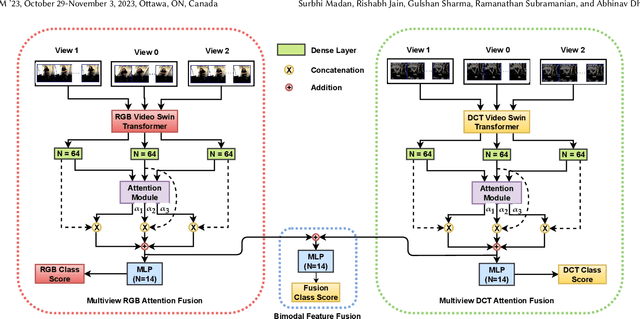

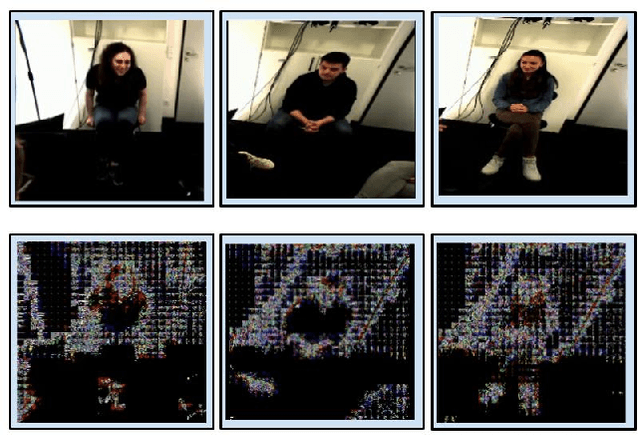

Abstract:Bodily behavioral language is an important social cue, and its automated analysis helps in enhancing the understanding of artificial intelligence systems. Furthermore, behavioral language cues are essential for active engagement in social agent-based user interactions. Despite the progress made in computer vision for tasks like head and body pose estimation, there is still a need to explore the detection of finer behaviors such as gesturing, grooming, or fumbling. This paper proposes a multiview attention fusion method named MAGIC-TBR that combines features extracted from videos and their corresponding Discrete Cosine Transform coefficients via a transformer-based approach. The experiments are conducted on the BBSI dataset and the results demonstrate the effectiveness of the proposed feature fusion with multiview attention. The code is available at: https://github.com/surbhimadan92/MAGIC-TBR
 Add to Chrome
Add to Chrome Add to Firefox
Add to Firefox Add to Edge
Add to Edge